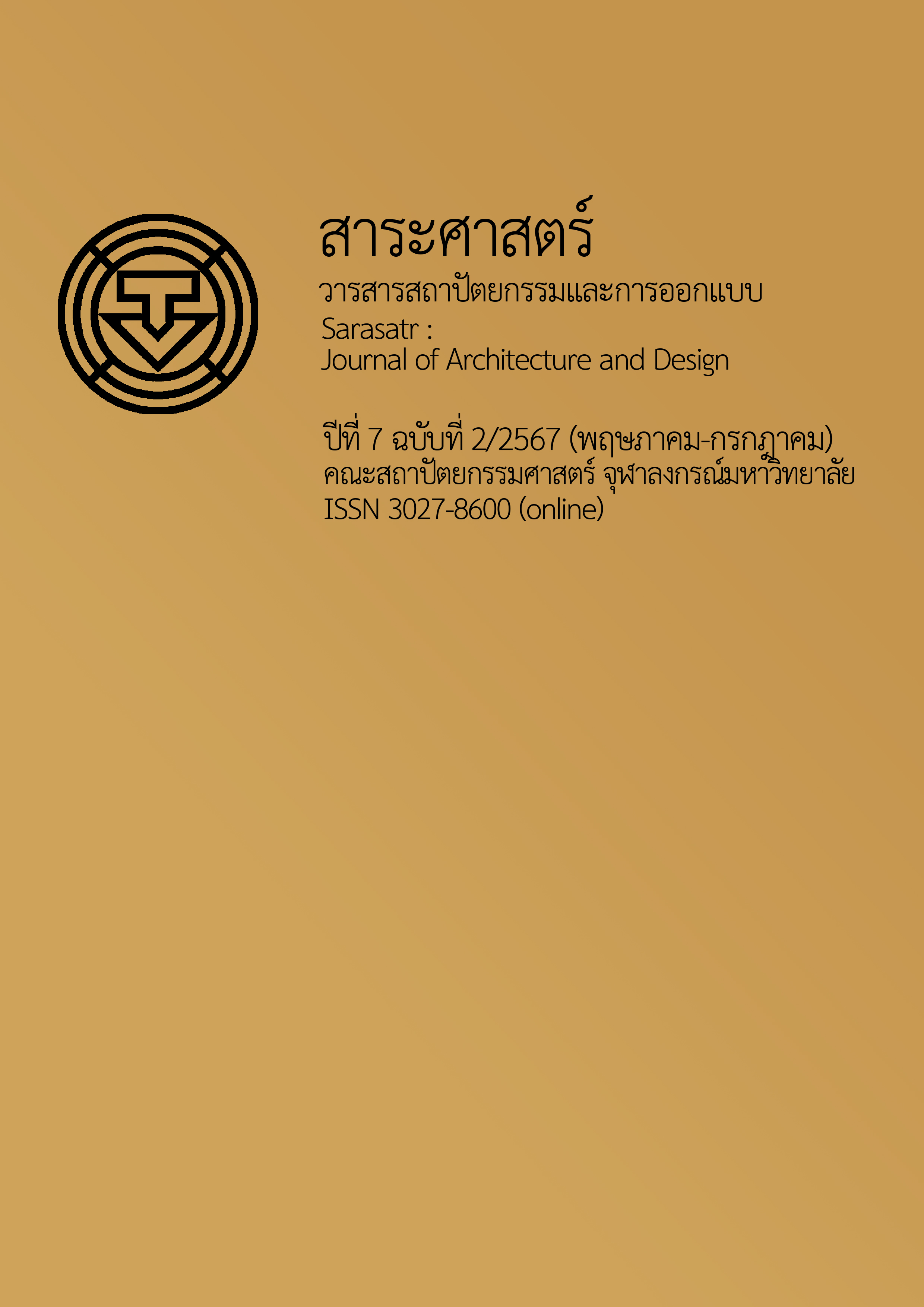การติดตามผลการดำเนินงานโครงการที่อยู่อาศัยพร้อมอาชีพ กรณีศึกษา กลุ่มผู้สูงอายุและคนพิการในโครงการบ้านเคหะสุขประชาร่มเกล้าและฉลองกรุง
Main Article Content
บทคัดย่อ
บ้าน หรือที่อยู่อาศัยเป็นหนึ่งในปัจจัยสี่ที่จำเป็นต่อการดำรงชีวิตของมนุษย์ จากผลการสำรวจข้อมูลภาวะเศรษฐกิจและสังคมของครัวเรือนของสำนักงานสถิติแห่งชาติปี พ.ศ. 2558 พบว่า มีครัวเรือนที่ไม่มีกรรมสิทธิ์ในที่อยู่อาศัยจำนวน 5.87 ล้านครัวเรือน กระทรวงการพัฒนาสังคมและความมั่นคงของมนุษย์ จัดทำแผนแม่บทการพัฒนาที่อยู่อาศัยระยะ 20 ปี (พ.ศ. 2560-2579) โดยมีเป้าหมายในการจัดสร้างที่พักอาศัย 100,000 หน่วย ภายในระยะเวลา 5 ปี (พ.ศ. 2564-2568) โดยการเคหะแห่งชาติได้มีการพัฒนาโครงการบ้านเช่าสำหรับผู้มีรายได้น้อย “บ้านเคหะสุขประชา” ใน พ.ศ. 2563 เพื่อเป็นการสร้างความมั่นคงด้านที่อยู่อาศัยให้กับประชาชนกลุ่มผู้มีรายได้น้อยในช่วงที่เศรษฐกิจของประเทศได้รับผลกระทบจากการแพร่ระบาดของโรคติดเชื้อไวรัสโคโรนา 2019 (COVID-19) เพื่อให้ผู้มีรายได้น้อย ผู้สูงอายุ คนพิการ กลุ่มเปราะบาง ข้าราชการชั้นผู้น้อย ข้าราชการเกษียณ รวมถึงผู้บุกรุกในพื้นที่สาธารณะ ให้มีความมั่นคงในที่อยู่อาศัย บทความนี้นำเสนอการศึกษา วิเคราะห์ และติดตามผลการดำเนินงานของโครงการฯ การอยู่อาศัยของผู้สูงอายุและคนพิการในโครงการบ้านเคหะสุขประชาร่มเกล้าและฉลองกรุง เนื่องจากสภาพแวดล้อมทางด้านกายภาพมีผลต่อการอยู่อาศัยของผู้สูงอายุและผู้พิการ ทั้งในสภาพร่างกายและจิตใจ โดยติดตามผลการดำเนินงานของโครงการฯ จะช่วยเป็นแนวทางในการปรับปรุงโครงการฯ เพื่อนำไปสู่การปรับปรุงพื้นที่อยู่อาศัยของผู้สูงอายุและคนพิการ ในรูปแบบที่อยู่อาศัยรายได้น้อยพร้อมอาชีพ และสามารถเป็นประโยชน์ต่อแนวทางการจัดการ โครงการที่อยู่อาศัยสำหรับผู้สูงอายุ หรือคนพิการรายได้น้อยสำหรับภาครัฐต่อไป
ผลการศึกษาพบว่า ผู้สูงอายุและคนพิการในโครงการที่อยู่อาศัยเกิน 6 เดือน ส่วนใหญ่มีรายได้เฉลี่ยต่อครัวเรือนอยู่ที่ไม่เกิน 10,000 บาทต่อเดือน เลือกเข้าอยู่อาศัยในโครงการเนื่องจากค่าเช่าที่อยู่อาศัยอยู่ในช่วงราคาที่สามารถเข้าถึงได้และรูปแบบที่อยู่อาศัยของโครงการมีรูปแบบชั้นเดียว เมื่อให้ผู้สูงอายุและคนพิการเปรียบเทียบที่อยู่อาศัยของตนเองก่อนและหลังเข้าอยู่อาศัยในโครงการ พบว่า สภาพการอยู่อาศัยในโครงการทำให้ผู้อยู่อาศัยมีคุณภาพชีวิตที่ดีขึ้น ที่อยู่อาศัยมีขนาดที่เหมาะสม โดยความพึงพอใจในการอยู่อาศัยอยู่ในเกณฑ์มีความพึงพอใจมาก ในส่วนความพึงพอใจในเศรษฐกิจ แม้ผลการสำรวจในภาพรวมพบว่าผู้อยู่อาศัยส่วนใหญ่มีความพึงพอใจใน "เศรษฐกิจสุขประชา” มาก ทั้งด้านการอบรม ค่าเช่า พื้นที่โครงการ และทำเลที่ตั้ง แต่ในส่วนของอาชีพที่โครงการจัดเตรียมให้ ผลการสัมภาษณ์พบว่า ผู้อยู่อาศัยในโครงการที่เป็นผู้สูงอายุและคนพิการ ไม่ได้ประกอบอาชีพที่โครงการจัดหาให้ เนื่องจากสภาพร่างกายที่เสื่อมลงทำให้ไม่สามารถประกอบอาชีพค้าขายในโครงการฯ หรือบางส่วนไม่สามารถเข้าร่วมการอบรมอาชีพของโครงการฯ ได้เนื่องจากต้องทำงานหารายได้วันต่อวัน จากผลสรุปข้างต้นพบว่า โครงการสามารถตอบสนองความพึงพอใจในรูปแบบการอยู่อาศัยทางกายภาพของผู้สูงอายุและคนพิการได้ดี แต่ไม่สามารถตอบสนองความต้องการในด้านการประกอบอาชีพหลังอยู่อาศัยในโครงการได้
Article Details
เอกสารอ้างอิง
การเคหะแห่งชาติ. (2563a). โครงการบ้านเช่าสำหรับผู้มีรายได้น้อย “บ้านเคหะสุขประชา” กรุงเทพมหานคร (ร่มเกล้า). (เอกสารไม่ตีพิมพ์เผยแพร่).
การเคหะแห่งชาติ. (2563b). โครงการบ้านเช่าสำหรับผู้มีรายได้น้อย “บ้านเคหะสุขประชา” กรุงเทพมหานคร (ฉลองกรุง). (เอกสารไม่ตีพิมพ์เผยแพร่).
โกศล จึงเสถียรทรัพย์, พุทธชาติ แผนสมบุญ, และธนวรรณ สาระรัมย์. (2560). โครงการการออกแบบสภาพแวดล้อมสถานพยาบาลให้เอื้อต่อการเยียวยา. https://kb.hsri.or.th/dspace/handle/11228/4797?locale-attribute=th
จันทร์จุรี ลีทอง. (2555). แนวทางการปรับปรุงสภาพที่อยู่อาศัยและพัฒนาต้นแบบที่อยู่อาศัยเพื่อคนพิการ จังหวัดนนทบุรี [วิทยานิพนธ์ปริญญามหาบัณฑิต, จุฬาลงกรณ์มหาวิทยาลัย]. CUIR. https://cuir.car.chula.ac.th/handle/123456789/37383
จิระภา ศรีคำ. (2545). สภาพการอยู่อาศัยของผู้สูงอายุในที่อยู่อาศัยแบบแฟลต เคหะชุมชนดินแดง 1 และ 2 กรุงเทพมหานคร [วิทยานิพนธ์ปริญญามหาบัณฑิต, จุฬาลงกรณ์มหาวิทยาลัย]. CUIR.https://cuir.car.chula.ac.th/handle/123456789/23963
ไตรรัตน์ จารุทัศน์. (2561). Universal Design - การออกแบบเพื่อคนทั้งมวล ลดปัจจัยเสี่ยงการหกล้มและเสียชีวิตของผู้สูงอายุ. https://resourcecenter.thaihealth.or.th/article/universal-design-%
นภัคมน นิติวนะกุล. (2559). สภาพการอยู่อาศัยของคนพิการหลังการปรับปรุงบ้านในโครงการปรับสภาพแวดล้อมที่อยู่อาศัยเฉลิมพระเกียรติสมเด็จพระเทพรัตนราชสุดาฯ สยามบรมราชกุมารี [วิทยานิพนธ์ปริญญามหาบัณฑิต, จุฬาลงกรณ์มหาวิทยาลัย]. CUIR.https://cuir.car.chula.ac.th/handle/123456789/55628
ภาวดี อังศุสิงห์. (2557). สภาพแวดล้อมภายนอกอาคารที่เหมาะสมสำหรับผู้สูงอายุที่มีภาวะสมองเสื่อมในสถานบริบาล.วารสารวิชาการ คณะสถาปัตยกรรมศาสตร์จุฬาลงกรณ์มหาวิทยาลัย, 63, 170-120.
มูลนิธิสถาบันวิจัยและพัฒนาผู้สูงอายุไทย. (2551). แนวคิดผู้สูงอายุที่มีศักยภาพ. https://archive.lib.cmu.ac.th/full/T/2555/nuger30755ww_ch2.pdf
ศศิธร บัวประดิษฐ์. (2562). สภาพการอยู่อาศัยของผู้สูงอายุ หลังจากการย้ายที่อยู่อาศัยแบบแฟลต สู่อาคารสูง : กรณีศึกษาอาคารพักอาศัยแปลง G โครงการฟื้นฟูเมืองชุมชนดินแดง เขตดินแดง กรุงเทพมหานคร. สาระศาสตร์ : วารสารสถาปัตยกรรมและการออกแบบ, 2(3), 326-338. https//so05.tci-thaijo.org/index.php/sarasatr/article/view/187563/152934
สำนักนโยบายและแผน. กลุ่มงานติดตามและประเมินผล. (2550). คู่มือการติดตามและประเมินผล. https://www.senate.go.th/assets/portals/1/files/manual_assess.pdf
Bechtel, R. B., Marans, R. W., & Michelson, W. M. (1987). Methods in environmental and Behavioral research. Van Nostrand Reinhold.
Calkins, M. P. (1988). Design for dementia: Planning environments for the elderly and the confused. National Health.
Miles, M. B., & Huberman, A. M. (1994). Qualitative data analysis: An expanded sourcebook (2nd ed.).Thousand Oaks.
Nastasi, B. K., & Schensul, S. L. (2005). Contributions of qualitative research to the validity of intervention research. Journal of School Psychology, 43(3), 177-195.
United Nations Conference on Housing and Sustainable Urban Development (Habitat III). (2016). Policy paper 10: Housing policies. https://habitat3.org/wp-content/uploads/Habitat%20III%20Policy%20Paper%2010.pdf


